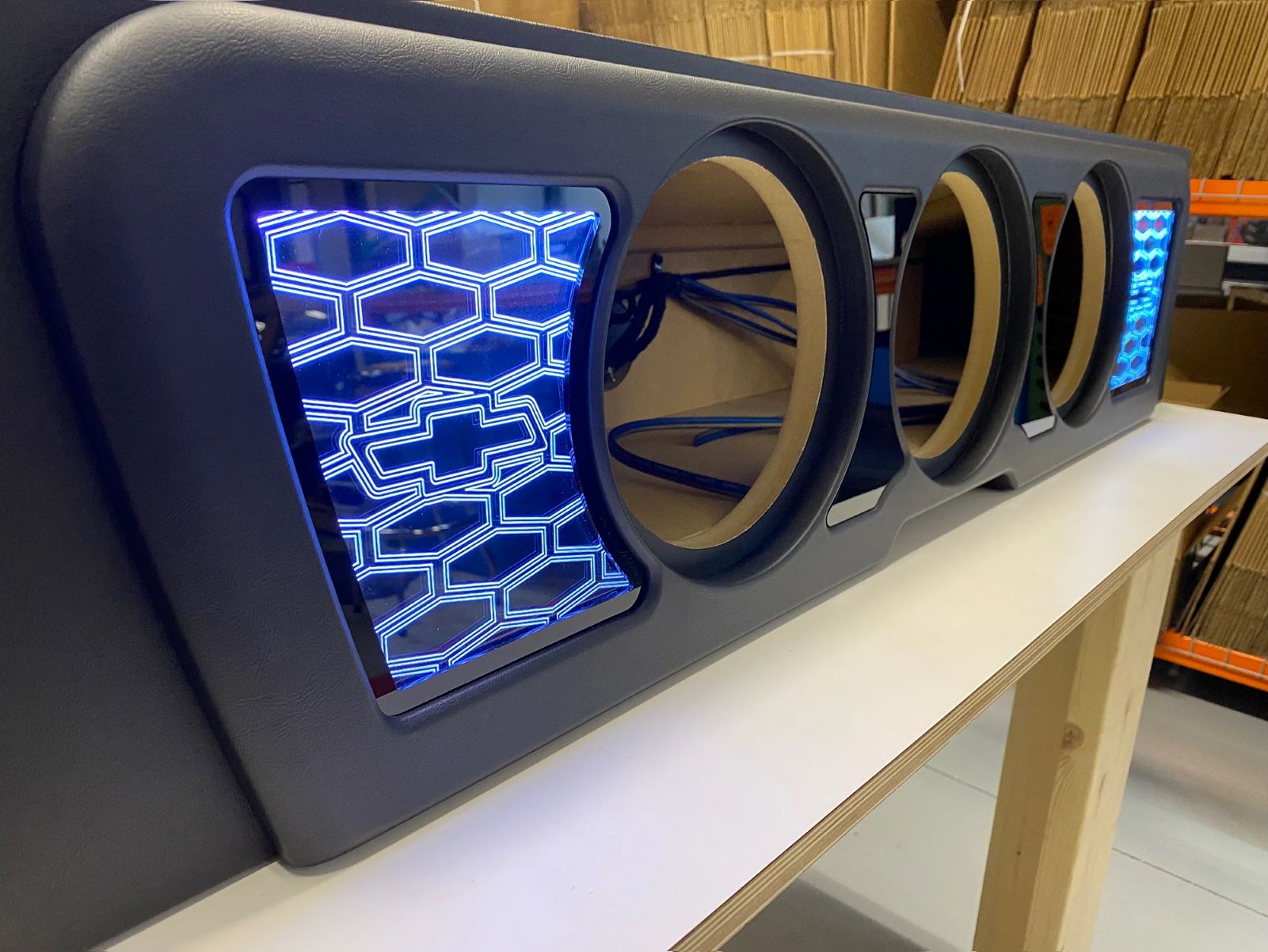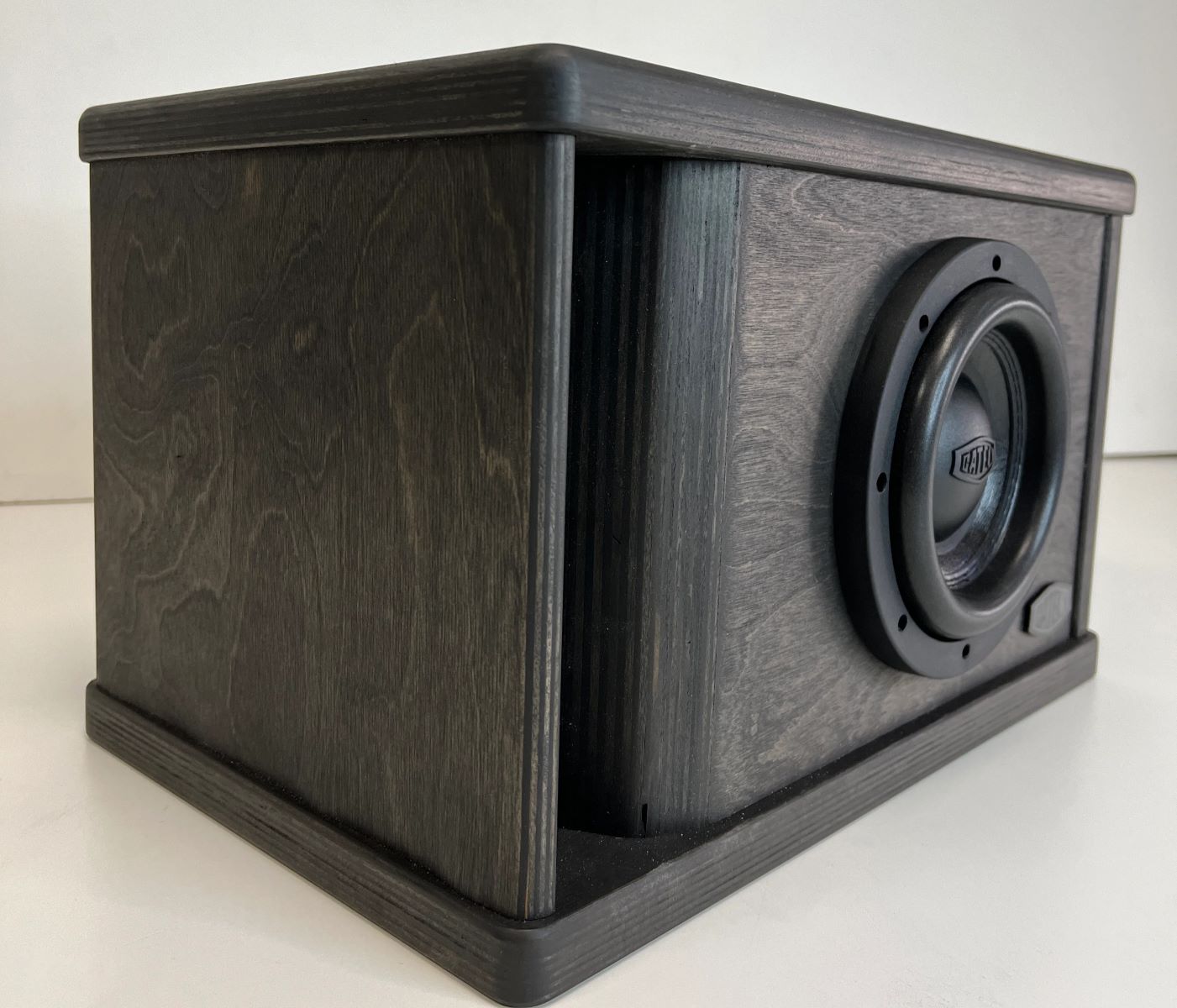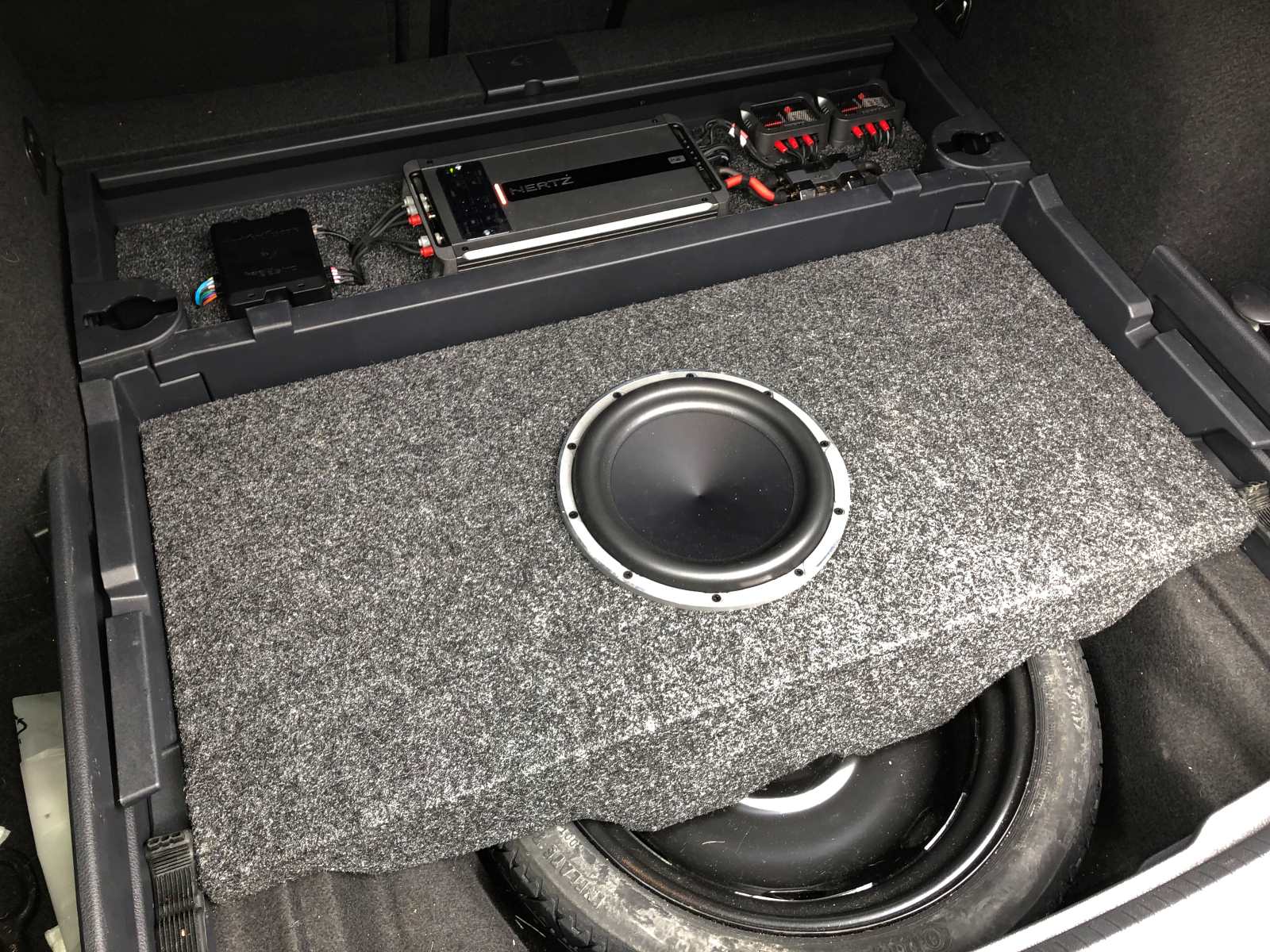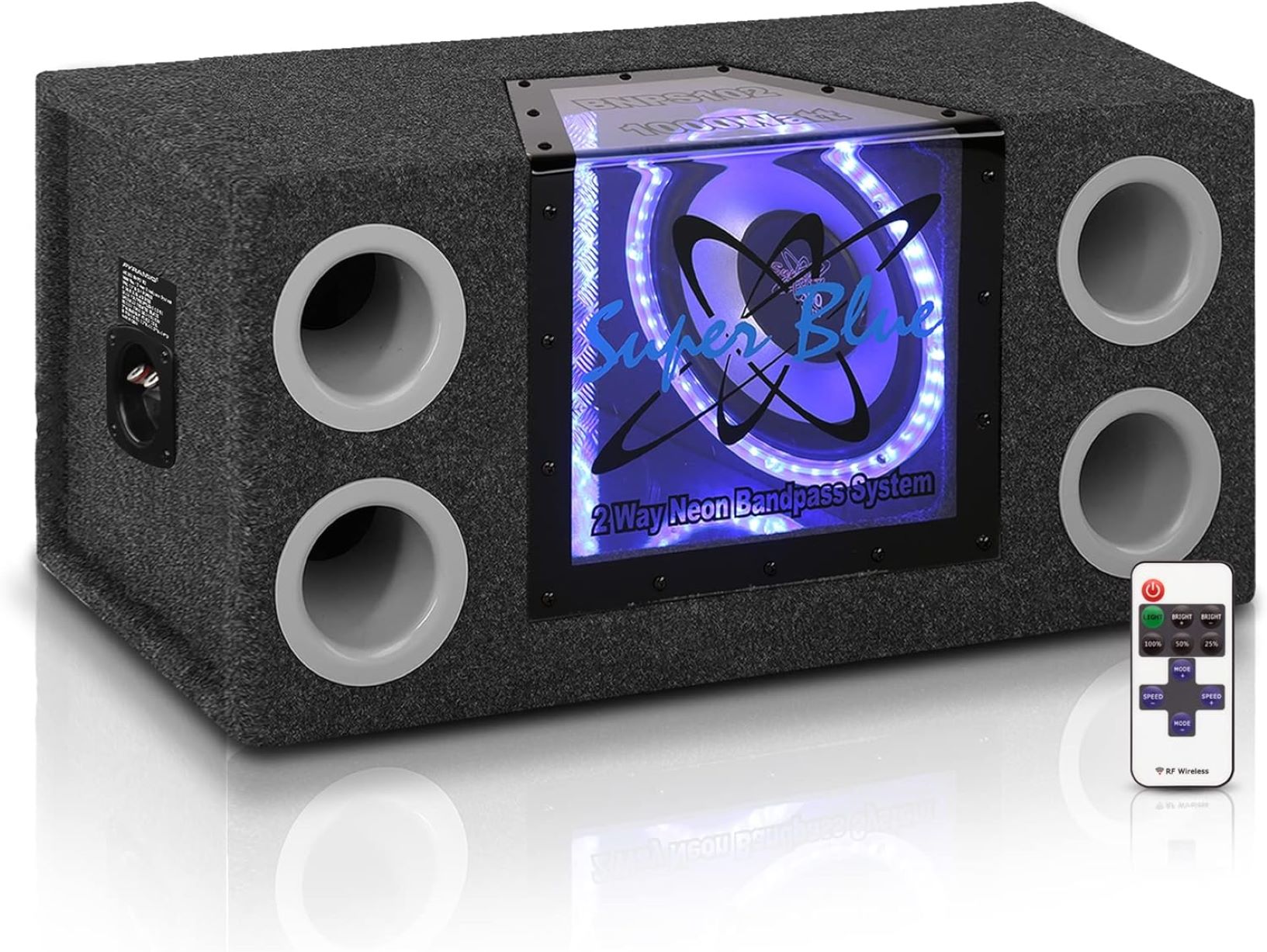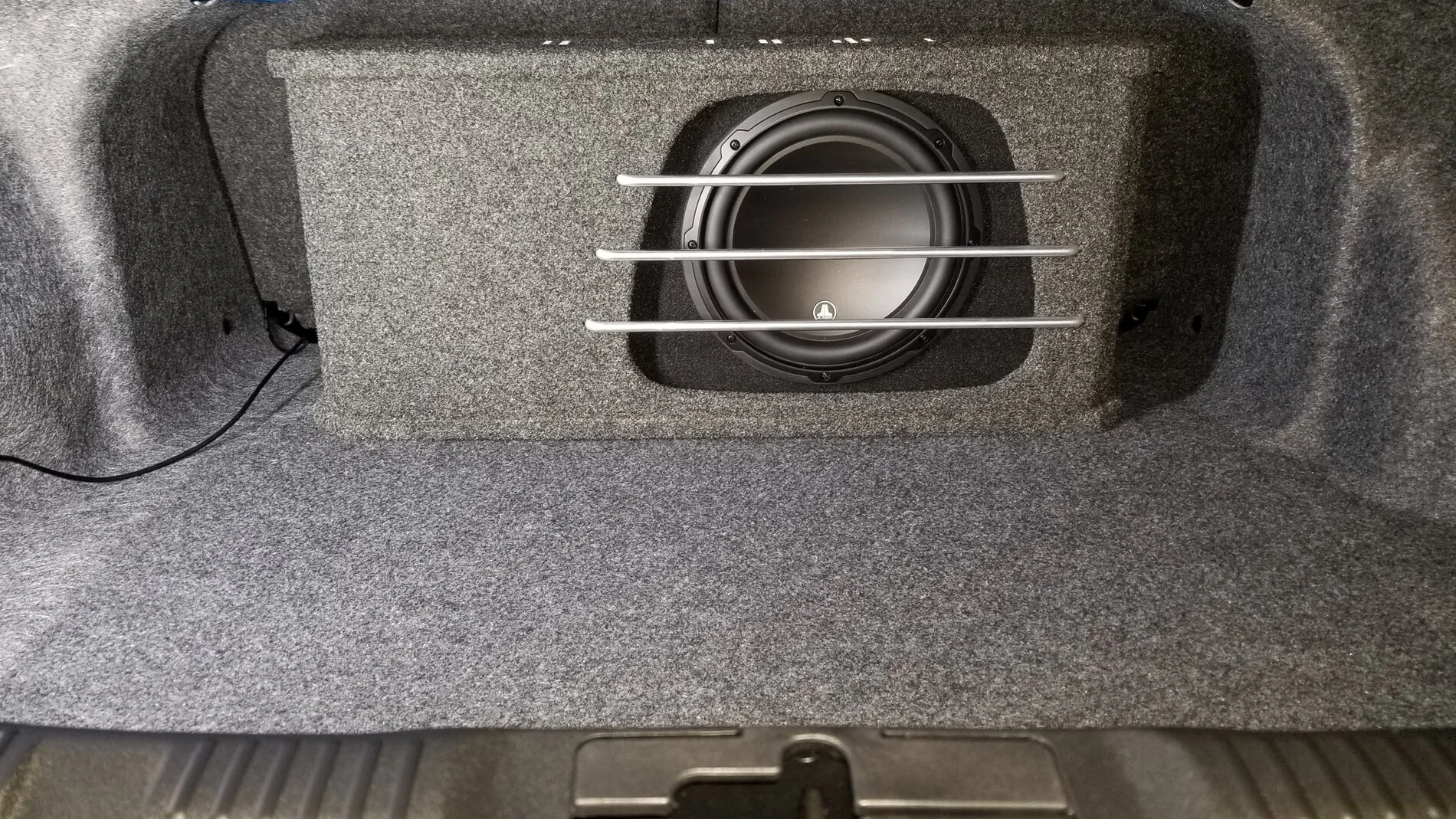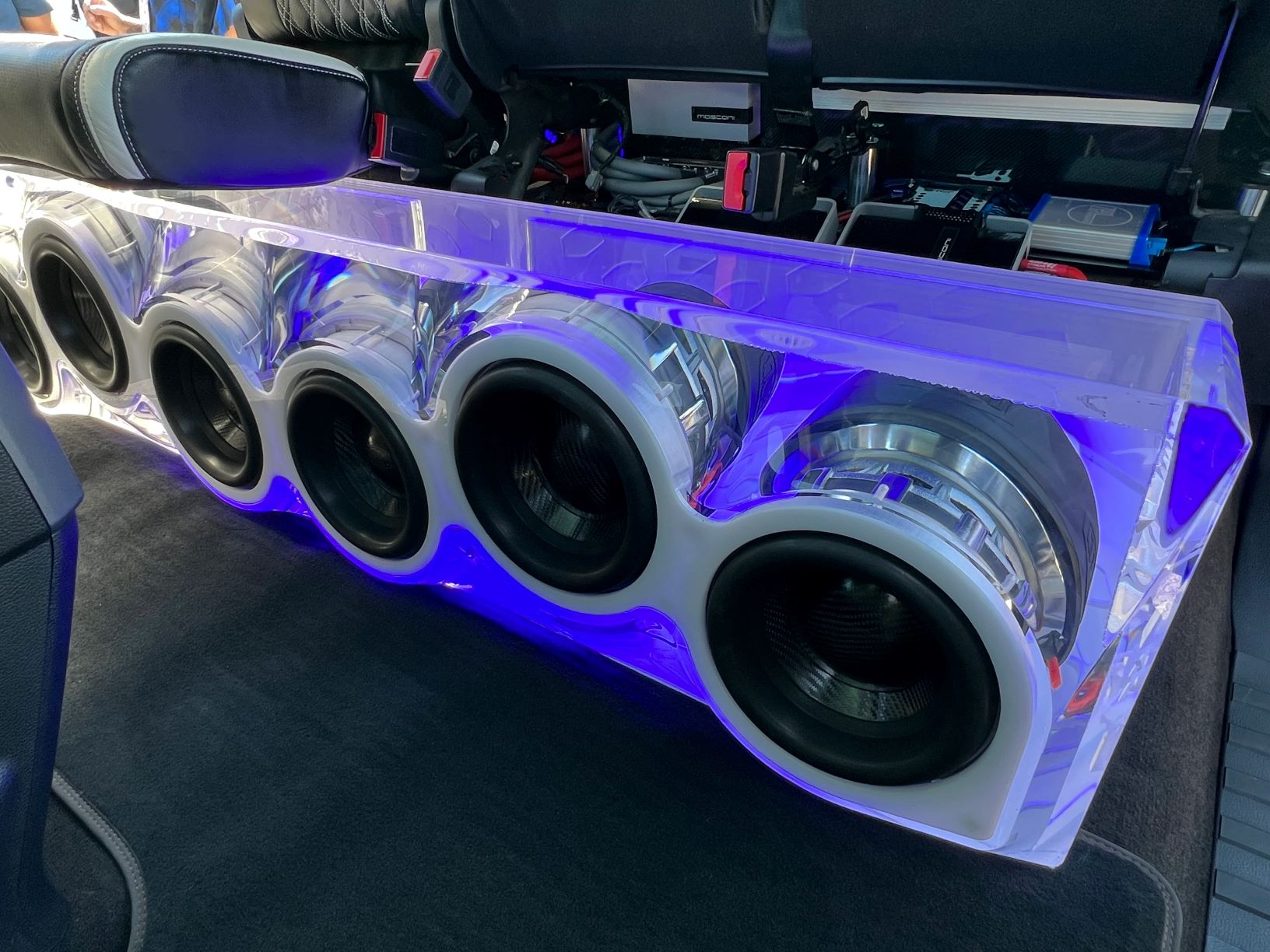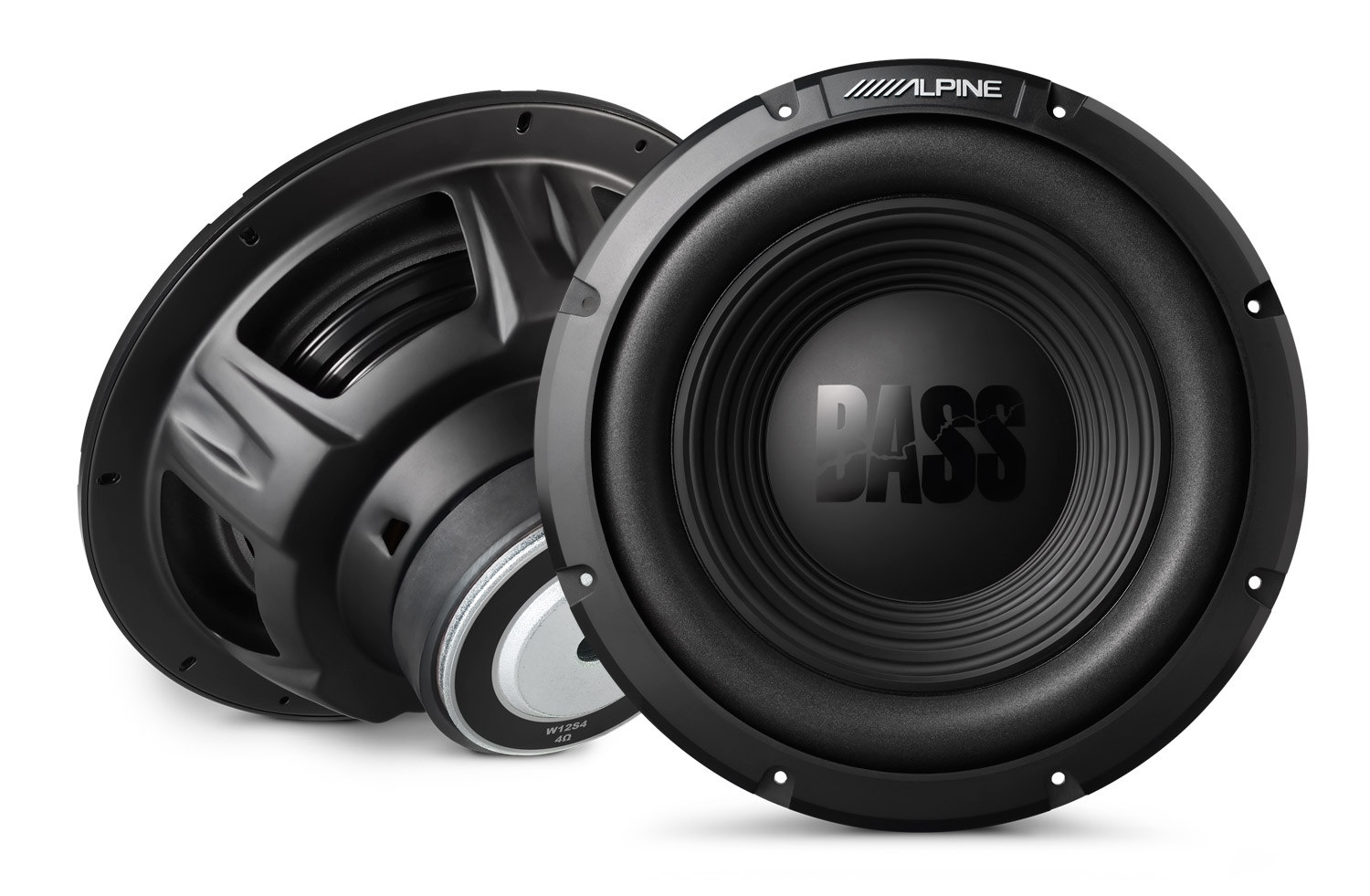Home>Instruments>Bass>How To Build A Subwoofer Box For Deep Bass
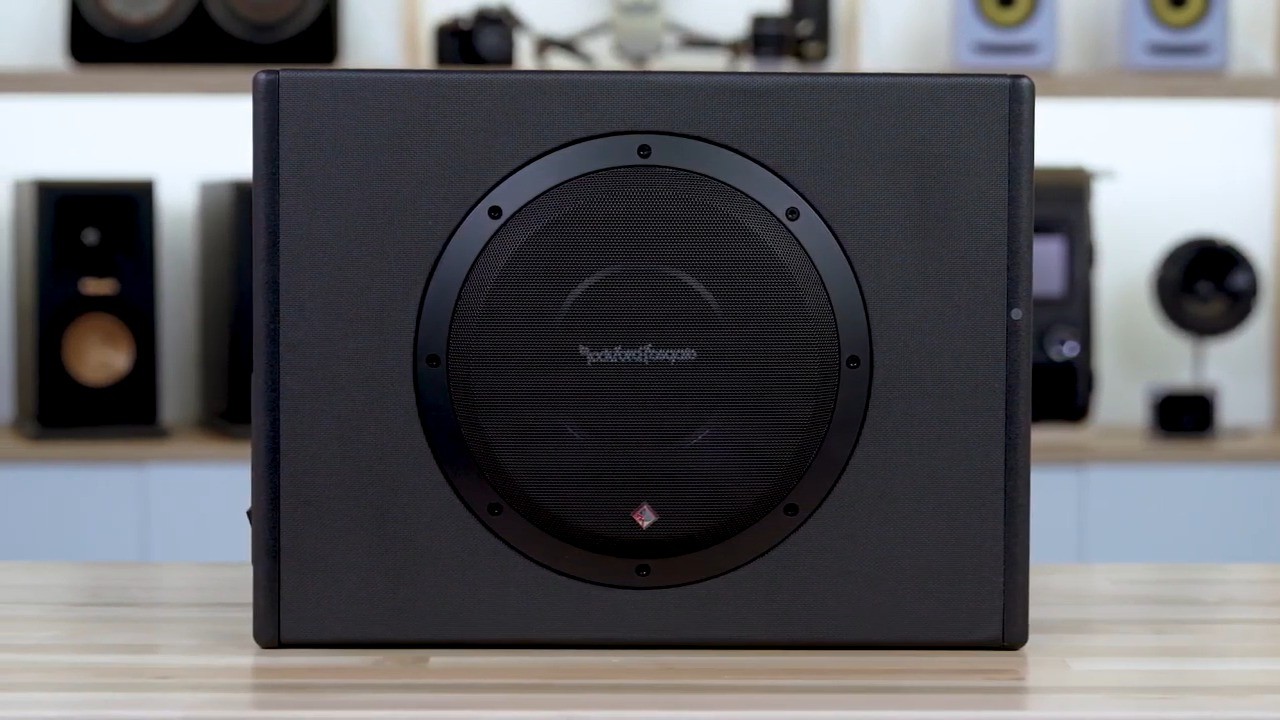

Bass
How To Build A Subwoofer Box For Deep Bass
Modified: February 18, 2024
Learn how to build a subwoofer box to achieve deep bass in your car audio system. Enhance your music experience with this step-by-step guide.
(Many of the links in this article redirect to a specific reviewed product. Your purchase of these products through affiliate links helps to generate commission for AudioLover.com, at no extra cost. Learn more)
Table of Contents
- Introduction
- Step 1: Gather Materials and Tools
- Step 2: Calculate the Internal Volume
- Step 3: Determine Box Design and Type
- Step 4: Measure and Cut the Pieces
- Step 5: Assemble the Box
- Step 6: Reinforce the Joints
- Step 7: Install the Subwoofer
- Step 8: Seal and Finish the Box
- Step 9: Test and Fine-tune the Subwoofer Box
- Conclusion
Introduction
Welcome to the world of deep bass! If you’re a music enthusiast or an audiophile, you know that a subwoofer is an essential component for experiencing rich and immersive sound. The subwoofer is responsible for producing those low-frequency tones that make your music, movies, and games come alive.
While you can buy a pre-made subwoofer box, building one yourself allows you to customize it to your specific needs and preferences. By building your own subwoofer box, you can achieve optimal performance and design that aligns with your audio setup.
In this step-by-step guide, we will walk you through the process of building a subwoofer box for deep bass. You don’t need to be a professional carpenter to tackle this project. With some basic woodworking skills and tools, you can create a custom subwoofer box that will enhance your listening experience.
Before we dive into the details, it’s important to understand that the design and dimensions of the subwoofer box play a crucial role in its performance. The size, shape, and material of the box will affect the sound quality, efficiency, and overall output of the subwoofer. So, it’s essential to get these factors right to achieve the deep, resonating bass you desire.
Now, let’s get started on our journey to building a subwoofer box for that immersive, chest-thumping bass!
Step 1: Gather Materials and Tools
Before you begin building your subwoofer box, make sure you have all the necessary materials and tools at hand. Here’s a list of what you’ll need:
- MDF or Plywood: Choose a high-quality, sturdy material for the box construction. Medium-density fiberboard (MDF) is a popular choice for its density and non-resonant properties, while plywood offers durability and strength.
- Subwoofer Driver: Select a subwoofer driver that matches your audio system’s specifications and power requirements. Consider factors like cone size, power handling, and impedance when choosing the right driver.
- Speaker Wire: You’ll need speaker wire to connect the subwoofer driver to your amplifier or receiver.
- Amplifier or Receiver: Ensure you have a suitable amplifier or receiver to power the subwoofer. Check the power output and compatibility with your subwoofer driver.
- Screws and Wood Glue: Choose screws that are appropriate for the thickness of the material. Wood glue will help reinforce the joints and improve the box’s structural integrity.
- Circular Saw or Jigsaw: You’ll need a saw to cut the MDF or plywood to the desired dimensions.
- Drill: A drill will be necessary for making holes and attaching the pieces together.
- Screwdriver: Have a screwdriver that matches the size of the screws you’re using.
- Tape Measure: Accurate measurements are crucial, so make sure you have a reliable tape measure.
- Clamps: Clamps will come in handy for holding the pieces together while the glue dries and during assembly.
- Sanding Block or Sandpaper: You’ll need sandpaper or a sanding block to smooth the edges and surfaces of the box.
- Paint or Veneer: If you want to give your subwoofer box a personalized touch, you can choose to paint it or apply a veneer finish.
Having these materials and tools ready will ensure a smooth and efficient building process. Now that you’re all set, let’s move on to calculating the internal volume of the subwoofer box in the next step.
Step 2: Calculate the Internal Volume
Calculating the internal volume of your subwoofer box is a crucial step in building a box that produces optimal bass performance. The internal volume refers to the amount of air space within the box, and it directly affects the subwoofer’s low-frequency response and overall sound quality.
To calculate the internal volume, you’ll need to consider the specifications of your subwoofer driver. The manufacturer’s specifications typically include the recommended box volume range for optimal performance.
One common method for calculating the internal volume is using the Thiele/Small parameters provided by the manufacturer. These parameters include the Vas (Equivalent Acoustic Volume) and Qts (Total Q value) of the driver.
Once you have these parameters, you can use an online speaker box calculator or software to determine the ideal box dimensions and internal volume. These tools take into account the driver’s parameters along with the desired tuning frequency and the type of box you want to build (sealed, ported, or bandpass).
For a sealed box, the internal volume should be within the recommended range provided by the manufacturer. This type of box offers accurate and tight bass response, but it requires a larger volume compared to ported or bandpass designs.
If you prefer a ported or vented box, the internal volume will be different, and you’ll need to calculate the dimensions of the port as well. A ported box can provide more output and lower bass extension but requires careful tuning to avoid port noise or distortion.
Remember that the internal volume calculation is just the starting point. You may need to make adjustments based on the available space, the specific characteristics of your subwoofer driver, and your personal preference for bass response.
Once you have the calculated internal volume, you’re ready to move on to determining the box design and type in the next step.
Step 3: Determine Box Design and Type
Once you have calculated the internal volume of your subwoofer box, it’s time to determine the box design and type that best suits your needs and preferences.
There are three primary types of subwoofer box designs: sealed (acoustic suspension), ported (bass reflex), and bandpass. Each design has its own characteristics and will produce varying bass responses.
A sealed box is the simplest and most common type. It provides accurate and tight bass response with good transient response. Sealed boxes are easier to build and don’t require specific tuning, making them suitable for a wide range of music genres.
A ported box, also known as a bass reflex box, uses a tuned port or vent to enhance low-frequency output. Ported boxes can provide louder and more extended bass compared to sealed boxes. However, they require careful tuning to avoid port noise or distortion.
A bandpass box combines the characteristics of a sealed and ported box. It uses a dual-chamber design with one chamber sealed and the other ported. Bandpass boxes can provide even greater output and are suitable for applications that require high SPL (sound pressure levels).
When choosing the box design and type, consider factors such as the desired bass response, available space, and the specifications of your subwoofer driver. Research the pros and cons of each design and weigh them against your specific requirements.
In addition to the box design, you’ll also need to decide on the box shape. Common shapes include rectangular (most common), square, and even custom shapes like triangular or trapezoidal. The shape can affect the internal standing wave patterns, so choose one that works well with the available space and aesthetics.
Once you have determined the box design and type, you can move on to measuring and cutting the pieces to build the subwoofer box in the next step.
Step 4: Measure and Cut the Pieces
With the box design and type determined, it’s time to start building! In this step, you’ll measure and cut the pieces that will form the subwoofer box. Accurate measurements and precise cuts are essential to ensure a proper fit and sturdy construction.
Follow these steps to measure and cut the pieces:
- Measure the internal dimensions of the box based on the calculated volume. This includes the length, width, and height.
- Transfer these measurements to the MDF or plywood sheets, marking the dimensions for each piece.
- Using a circular saw or jigsaw, carefully cut along the marked lines to create the individual pieces. Take your time and ensure smooth, straight cuts.
- Label each piece to keep track of their positions in the box assembly.
- If your design requires any additional holes or cutouts for the subwoofer driver, ports, or wires, mark and cut them accordingly.
- Double-check the measurements and make any adjustments as necessary before proceeding to the next step.
It’s worth mentioning that the thickness of the MDF or plywood will have an impact on the internal volume of the box. Take this into account when measuring and cutting the pieces.
Once all the pieces are cut, keep them organized and in the correct order for easy assembly. Sand the edges and surfaces of each piece to ensure a smooth finish and remove any rough edges.
Now that you have the individual pieces ready, it’s time to move on to the next step: assembling the subwoofer box.
Step 5: Assemble the Box
With all the pieces cut to the correct dimensions, it’s time to assemble the subwoofer box. Pay attention to detail during this step to ensure a tight and sturdy construction.
Follow these steps to assemble the box:
- Apply wood glue along the edges of one of the sides or panels.
- Align and place another piece on top of the glued edge, making sure they are flush and square. Use clamps to hold the pieces together firmly.
- Drill pilot holes into the edges where the two pieces meet.
- Insert screws through the pilot holes and secure them tightly. Repeat this process for all the remaining pieces.
- Double-check the corners and joints to ensure they are aligned properly and the box is square.
- Wipe off any excess glue with a damp cloth before it dries.
Remember to follow the specific instructions for your chosen box design. Depending on the type of box, you may need to leave gaps for ports, install bracing, or add additional panels.
If you’re building a ported or bandpass box, make sure the ports are securely installed and positioned correctly for optimal performance.
Once the box is assembled, allow the wood glue to dry completely before moving on to the next step. This usually takes a few hours, but check the manufacturer’s instructions for the recommended drying time.
With the box securely assembled, we can move on to reinforcing the joints in the next step to ensure long-lasting durability and strength.
Step 6: Reinforce the Joints
Reinforcing the joints of your subwoofer box is an essential step to add extra strength and durability to the construction. This ensures that the box can withstand the vibrations and stresses produced by the subwoofer driver.
To reinforce the joints, follow these steps:
- Remove the clamps from the assembled box once the wood glue has fully dried.
- Apply wood glue along the inside seams and joints of the box.
- Measure and cut wooden or MDF bracing pieces to fit inside the box. Braces are strips or panels that are attached to the internal sides of the box to provide additional support and stability.
- Place the bracing pieces at strategic locations inside the box, such as the corners and along the longest panels, to strengthen the joints. Make sure they fit snugly and align with the walls.
- Apply wood glue to the contact surfaces of the bracing pieces and press them firmly against the box walls.
- Use clamps or weights to apply pressure to the joints and hold the bracing pieces in place while the glue dries.
- Allow the wood glue to dry completely, following the manufacturer’s instructions.
Reinforcing the joints with bracing will minimize any potential flexing or movement of the box, which can negatively impact the sound quality and overall structural integrity.
Keep in mind that the specific bracing technique and placement may vary depending on your subwoofer box design. It’s essential to research and follow the recommended bracing guidelines for your chosen box type.
Once the joints are reinforced and the glue is fully dried, you can proceed to the next step of installing the subwoofer driver into the box.
Step 7: Install the Subwoofer
Installing the subwoofer driver into the subwoofer box is a critical step in completing your DIY project. Proper installation ensures that the subwoofer operates efficiently and delivers the deep bass you desire. Follow these steps to install the subwoofer:
- Locate the desired position for the subwoofer driver on the front or side panel of the subwoofer box.
- Measure and mark the mounting hole dimensions based on the specifications provided by the manufacturer.
- Using a drill and an appropriately sized hole saw or jigsaw, carefully cut out the mounting hole.
- Remove any excess material or rough edges around the mounting hole using sandpaper or a sanding block.
- Place the subwoofer driver into the mounting hole, ensuring that it fits snugly and is centered.
- Use the provided screws or mounting brackets to secure the subwoofer driver to the box. Follow the manufacturer’s instructions for the appropriate mounting method.
- Double-check the alignment and tightness of the screws to ensure the subwoofer driver is securely attached.
During the installation process, be mindful of the wiring connections. Connect the speaker wire from the subwoofer driver to the corresponding terminals on your amplifier or receiver, following the color coding or labeling provided.
It’s essential to handle the subwoofer driver with care to avoid damaging the cone or voice coil. Avoid pressing on the cone or applying excessive force during installation.
Once the subwoofer driver is securely installed and connected, you’re ready to move on to the next step: sealing and finishing the subwoofer box.
Step 8: Seal and Finish the Box
Sealing and finishing the subwoofer box is an important step to ensure optimal performance and enhance the aesthetics of your DIY project. Proper sealing prevents air leaks and resonances, while the finishing touches add a professional look. Follow these steps to seal and finish the box:
- Inspect the seams and joints of the subwoofer box to ensure they are tight and secure. Use wood filler or caulk to seal any gaps or imperfections on the exterior of the box.
- Apply a layer of wood glue or silicone sealant along the inside edges of the box to create an airtight seal. This will prevent air leaks and improve the subwoofer’s performance.
- If you’re using a ported box, seal around the port edges as well to minimize air leakage and potential noise.
- Allow the sealant to dry completely according to the manufacturer’s instructions.
- Once the sealing is complete, sand the exterior surfaces of the box to create a smooth finish. Start with a rough grit sandpaper and gradually move to a finer grit for a polished look.
- If desired, apply a coat of primer to the box to ensure better adhesion of the paint or veneer.
- Choose a paint or veneer that matches your aesthetic preferences. Apply multiple thin coats for an even and professional finish.
- Avoid applying excessive layers of paint or varnish, as it can affect the acoustics of the box.
- Allow ample drying time between each coat, following the instructions provided by the paint or veneer manufacturer.
Remember, the sealing and finishing process not only improves the appearance of the box but also contributes to the overall sound quality and longevity of the subwoofer.
With the box sealed and finished, it’s time to move on to the final step: testing and fine-tuning the subwoofer box.
Step 9: Test and Fine-tune the Subwoofer Box
After completing the construction, sealing, and finishing of your subwoofer box, it’s time to test and fine-tune its performance to achieve the desired deep bass. Follow these steps to test and fine-tune your subwoofer box:
- Connect your subwoofer box to your amplifier or receiver, ensuring proper wiring connections.
- Play a variety of audio tracks that contain a wide range of frequencies, including both low and high-pitched sounds.
- Listen carefully to the output of the subwoofer and assess the overall sound quality.
- If necessary, make adjustments to the positioning of the subwoofer box within your listening space. Experiment with different locations to find the spot that provides the best bass response and integration with your main speakers.
- Monitor the volume levels and avoid pushing the subwoofer to its maximum capacity to prevent distortion or damage.
- Consider using an audio calibration tool or an app on your smartphone to help fine-tune the subwoofer’s crossover frequency, phase, and volume level.
- Make small adjustments to the subwoofer’s settings and re-test until you achieve a balanced and cohesive sound across all frequencies.
- Pay attention to any potential rattling or unwanted vibrations from the subwoofer or the box itself. Secure loose parts and tighten screws if needed.
Remember to take into account the specific characteristics of your room, such as its size and acoustics, and adjust the subwoofer settings accordingly.
Fine-tuning the subwoofer box may require some patience and experimentation. It’s a process that depends on personal preferences and the specific characteristics of your audio setup.
Once you are satisfied with the performance of your subwoofer, sit back, relax, and enjoy the deep, immersive bass that enhances your audio experience.
Congratulations! You have successfully built and fine-tuned a subwoofer box for deep bass.
Conclusion
Building a subwoofer box for deep bass is a rewarding and worthwhile project for any audio enthusiast. By following the step-by-step process outlined in this guide, you can create a custom subwoofer box that delivers powerful and precise low-frequency performance.
From gathering the materials and tools to calculating the internal volume, determining the box design, and measuring and cutting the pieces, each step is crucial in creating an optimal subwoofer box. Reinforcing the joints, sealing, and finishing the box ensure its durability and enhance its appearance.
Once your subwoofer box is complete, the testing and fine-tuning phase allows you to optimize the bass response and integrate the subwoofer seamlessly with your audio system. With a bit of patience and experimentation, you can achieve a well-balanced sound that enhances your music, movies, and gaming experiences.
Remember, the key to success lies in careful planning, accurate measurements, and attention to detail throughout the construction process. Take your time, research the best practices, and don’t hesitate to seek guidance or assistance if needed.
Now, it’s time to enjoy the deep, resonating bass produced by your custom-built subwoofer box. Sit back, relax, and let the immersive sound elevate your audio encounters to a whole new level.

